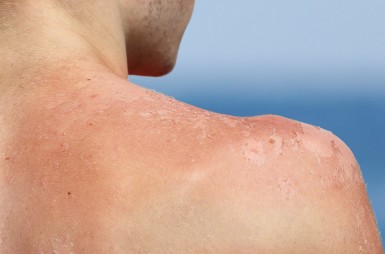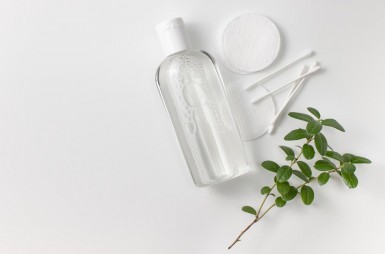Choosing the ideal sun protection:
a guide to a safe summer
Written by Paul Musset, Doctor in Pharmacy | published on | updated on 17/04/2024

Summer is around the corner and you want to enjoy it to the fullest? To prevent this pleasurable time from being spoiled by a painful sunburn, we strongly advice you protect your skin from ultraviolet rays by applying appropriate sun protection. Why is it important? What do sunscreens contain? How to choose yours? Here’s all you need to know about the benefits of your skin's best friend in the summertime.
Why is sun protection important?
Melanin and sun resistance
Melanin is a pigment whose color has a range going from red to dark brown. It is found in the hair follicles and in the deepest layers of the epidermis, as well as on its surface. Melanin is produced by a cell called melanocyte. Its role is to defend the epidermis against the harmful effect of ultraviolet light.
The amount and nature of the melanin your skin contains determine its color. The darker it is, the greater the capacity for the production of melanin by the melanocytes. When you expose your skin to the sun, the former protects itself by drawing on its melanin reserves that are located deep in the dermis. This reserve is limited, hence the concept of sun resistance, i.e. the amount of ultraviolet that your skin can be exposed to without risking damage.
To sum up, the more you expose yourself to the sun, the more you force your skin to create melanin to form a protective barrier. Once the melanin reserve is used up, the skin is no longer able to defend itself naturally against the harmful effects of ultraviolet rays.
Sun protection is the best anti-aging ally for our skin
The sun plays an important role in premature skin aging. The barrier that sunscreens offer to the upper layers of the epidermis also helps protect them from signs of aging such as dark spots and wrinkles.
The importance of preserving children’s skin
Why do we insist on the need to protect children from the sun?
- Children's skin is very thin and fragile because the natural barrier offered by the epidermis takes time to form. The risks of sunburn for kids are therefore multiplied;
- Effectively protecting a child from the sun allows them to preserve their sun resistance longer, to limit the risks of skin aging during adulthood and, above all, to avoid the development of a serious skin disease such as melanoma as much as possible.
How to choose your sunscreen?
What do sun protection labels stand for?
Sunscreens contain agents that have the ability to filter the sun's rays. The labels found on the tubes correspond to a level of filtration. The higher the label, the more effective against UV rays the sunscreen.
To indicate the protection factor, three acronyms representing the same value can be used:
- UV Index;
- SPF (Sun Protection Factor);
- SPF (Sunburn Protection Factor).
The main UV index mentioned on sunscreen bottles is related to UVB rays, i.e. the most harmful factor for the skin.
You should concentrate on that figure to understand the different degrees of protection. It is well worth noting that depending on your skin type, without protection, your skin will take more or less time to react and suffer from a sunburn.
By applying sunscreen, this average time will be multiplied by the corresponding index. There are 4 degrees of protection:
- Low: SPF 6 to 10;
- Medium: SPF 15 to 25;
- High: SPF 30 or 50;
- Very high: SPF 50+.
Another index can sometimes be found on the packaging although this is not mandatory: the UVA index. The latter indicates the degree of protection against UVA, which is mainly responsible for skin aging.
Which index to choose depending on your phototype?
Insofar as fair skins have a lower capacity to produce melanin compared to dark skins, the risk of rapidly depleting the stock of this pigment is higher.
Furthermore, given the low level of pigments found on the surface of the skin, the average lapse of time for a sunburn to form is very short. It is therefore necessary to choose a sufficiently high SPF to avoid burns. Here is a classification of the main phototypes followed by the appropriate index level:
- Phototype 1: very light skin - very high protection SPF;
- Phototype 2 and 3: light and medium skin - high protection SPF;
- Phototype 4: dark skin - medium or high protection SPF;
- Phototype 5: brown skin - weak or medium protection SPF;
- Phototype 6: black skin - weak SPF protection.
For the young ones, whatever their phototype is, it is essential to choose a sunscreen for kids with the highest protection index (50+).
Texture and composition of sunscreens: helping you choose
How to differentiate between a chemical and mineral filter?
Two types of filters can be found in sunscreens:
- Solar mineral creams that reflect or absorb UV and thus limit the risk of allergy;
- Chemical filters, that are very absorbent for UV rays but can sometimes trigger allergies.
Nowadays, most creams blend those two varieties to optimize efficiency.
Smart face sunscreens: integrated anti-aging action
Several brands now include anti-aging active ingredients into their sunscreen products to prevent skin aging.
At Cocooncenter, we offer a selection of the best anti-aging sunscreen products.
Misconception: does sunscreen prevent tanning?
No, using sunscreen will not prevent you from getting a tanned complexion. Even a cream labeled SPF 50 never offers 100% protection from the sun's rays. However, it allows your skin to prepare and gradually pigment without risking to burn and without overproducing melanin.
Sun protection: our top advice
Applying sunscreen even when just in an urban environment
People tend to think that sun cream should only be applied during the holidays, at the beach or when hiking in the mountains.
However, from the start of the summer season, it is important to protect your skin as soon as a prolonged exposure is planned, even if it only means going around town. You should thus use a day cream with integrated sun protection to protect your face from the harmful effects of UV rays.
How to apply the cream and how often to use it?
To optimize the effectiveness of your sunscreen, it is essential to respect a few key principles:
- Apply the cream on all the areas of the body that are likely to be exposed, taking extra care of the sensitive parts that you do not always think about: the soles of the feet, toes, fingers, neck, etc;
- Repeat the application every two hours or after swimming.
How useful are aftersun lotions?
Sun protection offers an effective barrier against the sun’s harmful effects, yet it does not prevent the skin from suffering from dehydration. On the contrary, when exposed to the sun, the skin requires more hydrating care so as to rebuild its natural hydrolipidic film. This is why Cocooncenter strongly recommends the use of an aftersun lotion after prolonged exposure.
Exposing your skin to ultraviolet rays without using filters presents an increased risk of seeing it age prematurely. The health hazards are real. Choosing a sun protection product adapted to your skin type is your best guarantee to spend the summer serenely!
Three key points to remember about sun protection:
- Whatever your phototype is, sun protection guarantees your skin remains healthy;
- Sun protection slows skin aging;
- To optimize the effectiveness of a sunscreen, it is essential to renew its application during the day (every 2 hours and after a swim).


























